
35 minute read
Storage
Energy Storage Market Breaks Quarterly Deployment Record in the US
Credits: Wood Mackenzie and US-ESA
Advertisement
2,156 MWh of new energy storage systems were brought online in the US in Q4 2020, making it the new record quarter for US storage.
According to Wood Mackenzie and the US Energy Storage Association’s (ESA) latest ‘US Energy Storage Monitor’ report, 2,156 megawatt-hours (MWh) of new energy storage systems were brought online in Q4 2020. This is an increase of 182 percent from Q3 2020, making Q4 the new record quarter for US storage.
As prices fall and barriers to storage deployment are eroded, front-of-the-meter (FTM) storage is taking off in the US. Four out of every five megawatts (MW) deployed in Q4 were FTM storage. The segment contributed 529 MW out of the total 651 MW of storage deployed in Q4. California saw the lion’s share of Q4 FTM deployments, according to the report.
It states that at 90.1 MW deployed, residential storage projects made up 14 percent of the MW total for Q4. After gradual growth in deployments over the first three quarters of 2020, Q4 saw a notable residential spike, driven in large part by homeowner interest in California.
“2020 is the first year that advanced energy storage deployments surpassed gigawatt-scale – a tremendous milestone on the path to our aspiration of 100 GW by 2030,” said Jason Burwen, US Energy Storage Association Interim CEO. “With continuing storage cost declines and growing policy support and regulatory reform in states and the federal government, energy storage is on an accelerating trajectory to enable a resilient, decarbonised, and affordable electric grid for all.”
Massachusetts led the non-residential segment in Q4, which is growing more slowly than the other two U.S. storage segments and deployed 76.5 MWh during the quarter. California and Hawaii also saw several new projects come online.
In 2020 overall, 1,464 MW / 3,487 MWh of new storage came online in the US 179 percent more storage was added in 2020 than in 2019 in MW terms. And the report expects the US storage market will add five times more MW of storage in 2025 than was added in 2020, with FTM storage continuing to contribute between 75-85 percent of new MW each year.
“The data truly speaks for itself,” said Dan Finn-Foley, Wood Mackenzie Head of Energy Storage. “The US installed 3,115 MWh of storage from 2013 through 2019, a total that 2020 beat in a single year. This is the hallmark of a market beginning to accelerate exponentially, and momentum will only increase over the coming years. The new largest battery in the world, the 300 MW / 1,200 MWh system newly installed at Moss Landing, likely won’t hold the title for long.”
The report highlighted that Q4 was the most eye-catching quarter to date for the residential market. California contributed most residential storage deployments in 2020 and Hawaii was also a very active market, while states in the Northeast, the Midwest, the mid-Atlantic and the Southeast are forecast to see growth over the next few years.
Rosatom's Storage Division Takes 49% Stake in Korean Energy Storage Firm
RENERA LLC a part of Rosatom State Corporation, has concluded the deal to acquire a 49 percent share of Enertech International Inc, a South Korean manufacturer of electrodes, lithium-ion storage cells, and energy storage systems.
RENERA manufactures energy storage systems based on lithium-ion batteries for special equipment, telecommunications systems, uninterruptible power supplies, energy storage systems, electric transport, railways, and other areas.
The signed agreement also involves building a facility for producing lithiumion cells and energy storage systems in Russia, with at least 2 GWh production capacity by 2030. The first stage of production is scheduled for 2025. Russian Lithium-ion batteries will be applied in electric vehicles (EVs), special equipment, and power grids.
Partnership with the Korean partner is a part of ROSATOM’s strategic development of non-nuclear businesses. Energy storage is an end-to-end technology in ROSATOM’s portfolio of new businesses.
Speaking of the partnership, President of TVEL Fuel Company, Natalia Nikipelova stated, “The alliance with the technological partner is a strategically important milestone for the development of Rosatom’s energy storage business. This will increase production capacity, significantly enhance our expertise and applications based on lithium-ion batteries and also facilitate access to foreign markets. "In addition, local manufacturing content in Russia means not just new technologies and products, but also new jobs”, Natalia added.
The establishment of a world-class battery production enterprise in Russia would also become a landmark event for the national automotive industry, the company claims. The deal has been obeyed with the aim to reduce dependence on imports, associated commercial risks, and as the result, lower cost of the final products could become an incentive for production growth and widespread introduction of Russian-made electric transport.
According to Bloomberg forecasts, the annual demand for lithium-ion batteries in the next 10 years will grow 10 times and by 2031 will amount to more than 2,000 GWh.
Europe To Become World's Second Largest Li-ion Battery Manufacturer By 2025
Europe is all set to become the world's second-largest manufacturer of lithium-ion battery cell by 2025, said a European Commission (EC) vice-president, although some key challenges need to be addressed.
In a high-level ministerial meeting of the European Battery Alliance (EBA), to support the continent’s multinational drive for a huge domestic production base and supply chain. The EC vice-president for inter-institutional relations and foresight, Maroš Šefčovič, announced that almost 70 industrial projects are being supported by the Alliance, expected to create as many as four million jobs by 2025. "EC had met with 'Ministers from leading Member States' as well as with the European Investment Bank to assess how much progress has been made through the multi-billion Euro alliance but more significantly, to discuss the way forward," said Maroš in a speech.
Šefčovič has been leading The European Battery Alliance’s mission since 2017, to create a battery value chain that is innovative, competitive, resilient, and sustainable.
Speaking on those 70 industrial projects, Maroš Šefčovič said, "While many of those 70 or so projects have advanced of expected schedules and decided to raise their scheduled output capacities beyond initial plans, covering areas from raw materials supply to digital technologies to support batteries in the field, the most progress has been made in the production of lithium-ion cell batteries."
He further added, "Despite the pandemic, Europe continues to be a battery hotspot, closing the investment gap to our major Asian competitors, and in moving fast towards its open strategic autonomy in this critical sector." "Many of the battery investments have recently advanced their timelines and raised their expected output capacity. The production of lithium-ion cell batteries has shown the most progress – and by 2025, we are now set to become the second-largest battery cell producer in the world, behind China," Šefčovič spoke about their goals.
As we are talking about Europe's battery storage systems, we must highlight one of Europe’s largest energy storage factories to be established with Northvolt's investment of USD 200 million. Entering into production in 2022, a new factory will have an initial annual output of 5 GWh, and a potential future capacity of 12 GWh.
According to the EC, The Ministerial Meeting’s participants embraced several policy initiatives adopted by the EC including;
Regulations for the battery supply chain proposed in 2020 including sustainabilityfocused standards on carbon footprint and recycling mandates.
The Critical Raw Materials Action plan, which added lithium to a list of materials deemed necessary for Europe to secure supply of in September.
Cooperation between the Member States has also been strong, with France and Germany and others working together to progress Important Projects of Common European Interest (IPCEIs) related to batteries worth more than EUR 20 billion over the past year.
However, there will be some key challenges as mentioned by Maroš Šefčovič and Europe has to overcome those.
Also, in January this year, European Commission announced a new Green Deal worth EUR 1 trillion to achieve the target of becoming the first climate-neutral bloc in the world by 2050. The European Green Deal’s Investment Plan – the Sustainable Europe Investment Plan – presented recently will mobilize public investment and help to unlock private funds through EU financial instruments, notably InvestEU, which would lead to at least EUR 1 trillion of investments.

Noon Energy's Breakthrough Renewable Energy Storage Technology Lands $3M Seed Investment

Noon Energy Inc., developer of a revolutionary ultra-low-cost battery technology for longduration energy storage, closed a $3 million Seed stage investment. Prime Impact Fund led the round and was joined by At One Ventures, Collaborative Fund, and Xplorer Capital. "Long duration storage is the missing link to a fully renewable electric grid. This is a difficult challenge because storage times must be increased from the 4 hours typical of today's batteries to 100 hours or more. No other efficient battery chemistry comes close to Noon's low cost because it uses only the abundant elements carbon and oxygen to store the energy. It was once thought impossible to build a battery using only these elements. Thanks to Noon's breakthrough technology, that is no longer the case." – Dick Swanson, Founder of SunPower, and Director on Noon's Board.
Today's widely used batteries store energy in relatively expensive metals like lithium, cobalt, and vanadium. In contrast, Noon's battery stores energy in the ultra-low-cost elements carbon and oxygen—storage media that cost well below $1 per kWh capacity, less than the cost of their containers. It does this at double the roundtrip energy efficiency of hydrogen. "Noon Energy offers a fundamentally novel battery technology with an extraordinarily low-cost entitlement. The technology could be substantially lowercost than lithium-ion batteries at long durations, enabling intermittent renewables to be 100% 'on-demand' power. We are really excited by what Chris and the team are building, and are proud to have led the Series Seed round." – Amy Duffuor, Principal at Prime Impact Fund, and Director on Noon's Board.
Noon's battery will provide long-duration stationary storage at a 10x lower storage cost than lithium-ion batteries, enabled by its earth-abundant materials and simple reaction chemistry. Sized at the 100+ hours storage capacity needed, it will make intermittent solar and wind power on-demand, 24/7 year-round, at a lower cost than fossil fuel generation and with zero emissions. Applicable to both gridscale and smaller applications, Noon gives solar-plus-storage days to weeks of reliable storage capacity, increasing critical grid and site resilience. Additionally, its high energy density (double lithium-ion at full system level) will enable longer-range electric ships, trucks, and other vehicles. "We have been looking for a sustainable battery solution with disruptive unit economics for a while and believe we have finally found it with Noon. By storing energy in the most earth-abundant elements, Noon not only reduces the cost of energy storage drastically, but also our reliance on mined metals like lithium and cobalt posing major social and environmental problems today. We are thrilled to partner with Chris and the team to bring this solution to the market." – Laurie Menoud, Partner at At One Ventures. "Noon team members and I had laid the groundwork at Columbia University and the Technical University of Denmark, where we developed CO2-to-fuels electrolysis technology to store renewable electricity in the form of hydrocarbon fuels. Noon's novel battery is based on the same core technology, with key modifications we invented. We have pulled together a world-class team and we are excited to partner with this awesome group of investors to bring our breakthrough storage technology to market." – Chris Graves, founder and CEO of Noon Energy.
The same core technology is also currently on-board NASA's Mars Perseverance rover and will soon begin producing oxygen for the first time by electrolysis of the CO2 atmosphere on Mars. Noon's founder helped develop this device as part of the NASA "MOXIE" science team since 2014.
Solar the Star For Attracting Investments in India’s Energy Sector
A suitable geographic terrain, supportive Government policies, future energy demand, and environmental concerns make a strong case for solar energy
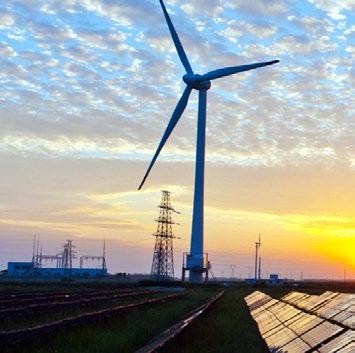
Rising population, an emerging economy with exponential growth ambitions, and urbanization are some factors contributing to India’s increasing energy demand. According to a report by the International Energy Agency (IEA), India will be the main driver of rising demand for energy over the next two decades, accounting for 25 per cent of global growth. The country is set to overtake the European Union as the world’s thirdbiggest energy consumer by 2030 source. While, in order to meet this pertinent demand, India remains dependent on a volatile global fossil fuel market, the need to develop a stable homegrown ecosystem for renewable energy is felt more than ever. Not only for existing energy needs, but also to ensure the decarbonisation of sectors like transportation and others with green energy. Among various forms of renewable energy, solar has shown sustained growth and the most promising future. Given the country’s geographical terrain and proximity to the tropic of cancer, solar power can be produced more efficiently and almost around the year. The share of solar power in India’s installed power capacity mix reached 10.3%, exceeding that of wind-based power sources for the first time in 2021. In other words, the rise has been about 11 times between 2014-19. Moreover, the projection also suggests that solar energy will witness exponential growth and match coal’s share in the Indian power generation mix by 2040 or earlier. As it happens, the share of coal is expected to decline from 44% in 2019 to 34% in 2040. Considering the massive opportunity, there has been a robust FDI inflow in India’s non-conventional energy sector. According to the data released by the Department for Promotion of Industry and Internal Trade (DPIIT), this investment stands at over US$ 42 billion since 2014 (source). The biggest catalyst for this investment is the Government's impetus on developing clean energy sources through various large-scale sustainable power projects. The Ministry of New and Renewable Energy (MNRE) has set an ambitious target to set up renewable energy capacities to the tune of 225 GW by 2022, of which about 114 GW is planned for solar. This will be done through various models including publicprivate partnership. Moreover, the Government has also extended the production led incentives (PLI) scheme in Solar PV manufacturing with financial outlays of Rs 4,500 crores under Atma Nirbhar Bharat 3.0. This is an important move towards enhancing India’s manufacturing capabilities and exports, especially at a time when the country is aiming to bridge the gap in balance of payments, with the rest of the world. All these policy measures have made solar power an attractive investment avenue for foreign director investors. Apart from bridging the energy deficit, developing solar power infrastructure also has the potential to create many employment opportunities at all levels, especially in rural areas. Thus, it also aligns well with the Government’s agenda of inclusive growth. Last but not the least, boosting the solar power production augurs well with India’s commitment to the Paris Climate Accord that aims to substantially reduce the risks and impacts of climate change on the world. With the increasing focus of investors on Environmental, Social, and Corporate Governance (ESG) oriented business, the sector has all the boxes ticked to draw a major chunk of FDI in the country.
Vishal Yadav
CEO and Founder, FDI India
No More Energy Poverty - The Bacha Way

Awanish Somkuwar
Deputy Director (PR), Department of Public Relations Government of Madhya Pradesh , Bhopal.
We have got rid of energy poverty. The days of painful suffering from energy-deficiency are over. We have already become India's first solarenergy rich village, says Anil Uike a tribal youth who is a solar energy ambassador of Bacha village in tribal Betul district.
Bacha is a small village of Khadara Gram Panchayat in Ghodadongri tehsil of Betul district. Bacha has gained an iconic status across the country as Solar Energy Rich Village. It is predominantly a tribal village with 450 plus population mostly of Gond families. "All of 75 households are using solar energy operated equipments. We are determined to make Bacha totally selfreliant in energy requirement switching over to solar energy, says Sharad Sirsam Pancha of Khadara Gram Panchayat. Just three years back IIT Bombay and Oil and Natural Gas Corporation came to help tribal families of Bacha gain self-sufficiency in energy needs. The social acceptance of solar energy technology has changed the scenario.
Freedom from Smoke
All 75 households are now solar-powered. They have energy storage system and solar energy operated kitchen. Using induction stove has made female members technology-friendly. "For years our families had been using earthen chulhas. Opening fire, eye-burning, inhaling thick smoke and constant coughing were horrifying things. informs Shanti Bai Uike Panch of Khadara Gram Panchayat. Now we are accustomed to using induction stove. We can easily cook anything on it. Even though we have cooking gas, its use is becoming occasional, she adds. "The traditional chulha was really a menace. I am now comfortable with the induction stove. It is operative any time. says Smt Radha Kumre.
Biotic Pressure on Forest Reduced
"The impact of harnessing solar-energy can be clearly measured from decreasing biotic pressure on adjacent forest, says Heeralal Uike who heads - Van Suraksha Samiti (Forest Protection Committee). Elaborating the primary tasks of Van Suraksha Samiti, he informs that all 12 members of the Committee guard the forest wealth and are watchful so that none harms the jungle. We have to be alert about illegal tree-felling and poaching activities. Earlier, female members used to visit the forest
regularly for collecting fuel wood and naturally fallen twigs. It was a common practice. Now it has stopped and we are greatly relieved." "I am the oldest native of this village. I have closely seen how things have changed, says Shekhlal Kavde who is in his 80s. His family depends on three acre agriculture land for livelihoods. He recalls how Bacha had no road. It was without electricity. No cleanliness at all. Today, Bacha is totally changed. I am happy to have enjoyed joyous moments in my lifetime."
Sharing the collective feeling of Bacha people, Anil Uike says that everyone is happy because of reduced electricity bills. The simple reason is that electricity consumption has drastically reduced. Solar power operated LED bulbs are enough to meet energy requirements.
A Source of Inspiration
"Bacha has inspired surrounding villages, says Rajendra Kavde Sarpancha of Khadara Gram Panchayat. He says that adjoining Khadara and Kevlajhir villages have also evinced interest. Kevlajhir is just 1.5 km. from Bacha while Khadara is 2 km.
"I feel honoured as Bacha has made me known not only in the district but nationally. People greet me warmly wherever I go. Similar is the feeling of Arun Kavde a BSc final year student of Shahpur Government College, which is 15 Km from Bacha. His father owns four acre agriculture land. "We are gradually switching over to solar power as the grid-supplied electricity is becoming costlier he says. The second big reason is that it is environment-friendly, he adds. "I feel proud when my friends request me to visit my house and see how my mother is using solar-powered kitchen with induction stove. Almost all of them have visited my place, he says.
A local person Devasu takes care of solar panels, induction stoves, bulb connections, storage battery and other technical aspects. He keeps asking family members if there is any problem. He immediately repairs minor faults.
Change in Social Behaviour
"All this began in 2017 when IIT Bombay picked-up Bacha for this project, informs Rumi Dallu Singh Dhurve - member of Janpad Panchayat Ghodadongri. He informs that the IIT Bombay helped installation of solar panels while Oil and Natural Gas Corporation (ONGC) provided induction stoves.
Asked about the change in Bacha's social behaviour, he informs that the positive changes are clearly visible. For example, villagers have become techno-friendly. They are exhibiting scientific temperament in dealing with social problems. They are more adaptive to newer technologies. The youngsters are even more enthusiastic and ask about how solar energy can make life more comfortable. I personally feel that Bacha model is extremely feasible and easily replicable.
Dhurve appreciates the vision of Aatmanirbhar Bharat. He believes that the vision can be realized through such community-driven initiatives at micro level. Mohan Nagar of Bharat Bharti Shiksha Samiti working for integrated development of rural areas in Betul says - if Bacha can achieve self-sufficiency in energy, there is no reason others can't do.

Credit Quality Of Large Indian Renewable Players Intact, Says Moody's

Moody's Investor Service, the global credit ratings firm, has been reported to have declared that the credit quality of Indian renewable energy firms remains intact, post the end of the 2019 and 2019 financial years. Or till the period ending March 2020. The firm's report has included 5 of the largest rated renewable firms in its ambit. Notable exceptions like Tata Power and large state owned firms like NTPC in any case will pass muster.
This was despite 15-20 per cent of wind and solar power projects underperforming during 2019-20, according to the report. Portfolio diversification, besides growth of 20 percent over the past five years ha ensured that these firms survive to look at the larger opportunities that will come up now. Abhishek Tyagi, a Moody’s Vice President and Senior Analyst has been quoted as saying that "About 15-20 per cent of Indian wind and solar projects did not meet capacity utilisation targets in fiscal years 2019 and 2020 because of wind generation curtailments and lower irradiance for solar projects, which were responsible for 56 per cent and 68 per cent of the underperformance respectively,”. As a result, rated renewable energy companies’ EBITDA declined 2-5.6 per cent in fiscal 2020, said the report. The Moody’s report has been based on an analysis of 176 projects totaling 11,462MW across five rated companies — Greenko Energy Holdings, ReNew Power Private Limited, Adani Renewable Energy, Azure Power Energy Ltd, and Azure Power Solar Energy Private Limited. Interestingly , three of these 5 firms have been in the news in just the past few weeks for fund raising from foreign partners, be it Renew's SPAC listing, Adani's deal with TOTAL, or Orix investing into Greenko. In other words, every single one of the firms considered by Moody’s has benefited from either access to capital through a market listing , or jointly with foreign partners. Interestingly, the report stops at the period ending March 2020, just when the impact of the Coronavirus pandemic would have started. As we are aware, the pandemic has done more to make stronger firms stronger, while culling weaker firms, than almost anything else. And it remains one of the less understood and researched outcomes of the year long disruption. Especially the first six to nine months. In India, we have seen it reflected in the bidding for renewable projects, where smaller firms have all but bowed out in recent months, and the ongoing liquidity crunch that continues as discom dues refuse to go down to the 60 dpd(day past due) that should be the norm. 180-270 days has become the new norm, hurting all players, especially smaller players. Thus, that effectively means that the larger renewable energy firms, with powerful sponsors will still get to participate in the far larger opportunities that will open up in this decade, a key feature of renewable energy growth, which would be the presence and opportunity for smaller firms to jump in, might not be as strong in the next 10 years.
Moody's has also flagged the presence of powerful sponsors as one positive that will ensure these firms continue to do better than one would expect normally, considering the credit challenges posed by the power sector in India.
BCD Decision Sparks Predictable Reactions, Costs To Go Up By 50 p/unit
Three days after the formal confirmation of government plans to impose an enhanced Basic Customs Duty (BCD) of 25 per cent and 40 per cent on imported solar cells and modules, respectively, the reactions have started coming in thick and fast. Dedicated developers, both those on record and off the record, have expressed their views strongly, calling the move not 'planned through', 'predictable;, and of course, inflationary. Now, ratings agency ICRA has come out with the first of what should be many predictions on the impact on actual power costs.
Girishkumar Kadam, co-group head, at ICRA ratings has been reported saying that BCD is expected to result in an increase in the capital cost for a solar power project by 23-24 per cent, which in turn would result in an increase in tariff by about 45-50 paise per unit.
Thus, as expected, prices are expected to stay under the unofficial 'discomfort' level of Rs 3 per unit and above, even after the duty starts kicking in. Sub Rs 2.70 per unit is the unofficial limit on solar power today, and that could yet be managed with domestic supplies eventually. Though issue will remain around quality, as recent procurements have shifted decisively towards Mono-PERC and even Bifacial modules in some projects, while domestic capacity is still dominated by polycrystalline output.
Ritu Lal, Senior VP & Head - Institutional Relations, Amplus Solar, speaking on the MNRE notification, says "High import duties will certainly lead to a significant increase in the cost of generation across all solar segments.
Import barriers can only be temporary measures. Eventually, Indian manufacturing will succeed only if we are able to compete in the global marketplace - in terms of price, technology, and scale".
Pinaki Bhattacharyya, CEO & MD Amp Energy India adds that “This move will slow down the race towards the 175 GW target by 2022 i.e. next year. Although this removes considerable uncertainty but the rates are too high and will increase the cost of solar power for discoms and consumers alike. This will increase the cost of manufacturing power as well as other industries in India. We understand that the intent of the government is positive and they want to encourage domestic manufacturing but the method should have been different. The government should have provided direct manufacturing subsidies to manufacturers to help them scale up their capacities and this would have been beneficial to the sector.”
For the government, making the shift to the higher duty structure, even while the fate of the SGD of 14.9 percent (expected to be phased out once BCD starts) has not been clarified yet, will depend on a series of players in the solar ecosystem moving seamlessly. From fresh domestic manufacturing capacities, to regulators moving faster on pending cases that are to come up before 2022, to clarity on the status of SEZ based manufacturers, who remain the dominant presence in manufacturing. What seems highly probable is that buying from China and other low cost sources abroad will speed up massively by the end of 2021, as developers stock up for avoiding delays, should they have to go to regulators for getting the benefits of a change in law event from BCD imposition, for their projects awarded earlier. Of course, this being India, we won't be surprised if many developers actually do the reverse, if their projects are already behind schedule due to other causes, as such delays have usually been condoned by regulators and tribunals.
For Indian manufacturers, the 15 percent price gap they face vis a vis China origin imports, even after SGD in some cases, will finally be bridged, giving them a price advantage, though the final difference will be depend on whether Chinese manufacturers drop prices further.
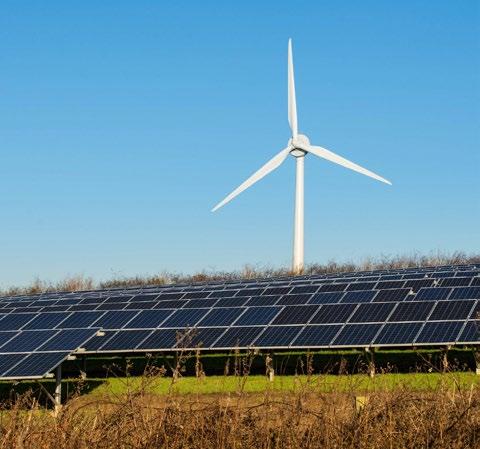
Siemens Commissions India’s First HVDC Power Transmission Link

Siemens has successfully commissioned India’s first highvoltage direct current (HVDC) link between Pugalur and Thrissur.
Siemens Limited has announced that it has successfully commissioned India’s first high-voltage direct current (HVDC) link featuring voltage-sourced converter (VSC) technology. The 2,000 megawatts (MW) electricity transmission system, consisting of two links between Pugalur in the state of Tamil Nadu and Thrissur in Kerala, supports the Power Grid Corporation of India (PGCIL) to counter the power deficit in India’s southern region and improve the grid stability.
The ±320 kilovolt (kV) HVDC system was realised by Siemens Limited in association with a consortium of Siemens Energy (Germany) and Sumitomo Electric Industries, Japan and features for the firsttime the integration of High Voltage Direct Current XLPE Cable with overhead lines in India. This VSC-based system features integration of HVDC XLPE (cross-linked polyethylene) cable with overhead lines which saves right-of-way as well as has a 35-40 percent less land footprint compared to conventional HVDC system.
Major HVDC equipment such as interface transformers and IGBT-based power converters, and other high & medium voltage AC equipment such as gas-insulated switchgear, air-insulated switchgear, control and relay panels, etc. have been supplied from Siemens Limited’s factories in India.
Gerd Deusser, Executive Vice President and Head, Energy, Siemens Limited, said, “we take great pride in partnering PGCIL in this landmark HVDC project. It supports the major initiatives of the Government to achieve ‘24×7 Power for all‘ in the country by ensuring reliable power supply, improving the grid’s stability, and facilitating the efficient use of renewable energy. The project reinforces our purpose of driving the energy transition to more sustainable, reliable, and innovative systems.”
Earlier in February, Prime Minister Narendra Modi had officially inaugurated the link that has now been put into commercial operation and enables the exchange of electricity in both directions. It had been revealed at the time that the project was built at cost of Rs 5070 crore.
At the time PM Modi had also dedicated to the nation the 50 MW Kasaragod solar power project. The project has been developed under the National Solar Energy Mission. Set up over 250 acres of land spread across Paivalike, Meenja and Chippar villages of Kasaragod district, it has been built with Central Government’s investment of around Rs 280 crore.














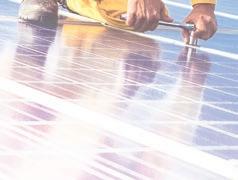







AQUACOOL Air Coolers Solar Fan Set
Product Brief: First time in
India MIST fan cum water cooler which runs without electricity on solar panel and battery backup.
PRODUCT FEATURES:
It has a solar panel , battery back up to 4-5 hours ,easily operated by a remote, has up-to 7 hours timer mode plus runs on electricity as well. It also got a 2.2 litre water tank and the water lasts in the tank for 8 hours.
PRODUCT APPLICATION:
Can be used for sanitising purpose as well which will keep your houses and offices protected. It can also be easily operated by a remote.
PRODUCT BENEFITS:
A solar powered water cooler which gives cool fresh air with mist waving goodbye to summer heat and power cuts, that has an adjustable height up to 4 feet.
AVAILABILITY:
The Product is at INR 11,299 on retail at: https://cutt.ly/PxwYnpQ
LiONCooler: The World’s Smartest Portable Solar Freezer
Product Brief:
LiONCooler is the first smart, app-controlled, rechargeable, solar fridge freezer.
PRODUCT FEATURES:
It keeps food and beverages cold without ice and works like a regular household refrigerator, but on-thego! LiONCooler chills to -4°F and is equipped with quality LG compressors to ensure performance.
PRODUCT APPLICATION:
It has a 173Wh Rechargeable and replaceable battery which takes 4-6 hours to fully charge. Battery has a 10hour life to keep the chill. The luggage-style design makes LiONCooler easy to move without having to lift. Use AC, 12-volt DC in the car, or solar panels to charge the freezer.
PRODUCT BENEFITS:
A solar powered, portable freezer you can take wherever you go and adjust the cooler’s temperature using the digital LCD display or remotely with the free Bluetooth App available for iOS or Android
AVAILABILITY:
The product is available in various options on retail; https://www.kickstarter.com And on the firm’s website; https://lioncooler.com/
GoSun Brew | Travel Coffee Maker and Portable Solar Power Bank
Product Brief:

Stainless steel cup, French press & heater in one, makes tea or coffee anywhere. Plus, solar power from a compact, portable power bank.
PRODUCT FEATURES:
An all in one cup you can take anywhere which runs on solar power. Featuring a 130W Heater and integrated French Press, this 16oz, doubledwalled mug will not only brew your drink.
PRODUCT APPLICATION:
GoSun Brew makes coffee easy, deploying 100 year old French Press tech with an integrated heater. Brew fresh coffee in just 15 minutes, you just have to add water, plug in Brew to power, heat for 10 minutes (wait till auto shut-off and LED indicator), add coffee grounds and steep, add Lid and French Press, and the coffee is ready.
PRODUCT BENEFITS:
Insulated mug holds 16oz (473ml), so you don’t have to be stingy. Stainless-steel mug is BPA free & dishwasher safe. GoSun Brew can also reheat beverages and food, Make instant meals like oatmeal, ramen noodles, soups, and more. It can maintain your drink’s preferred temperature.
AVAILABILITY:
The product is available in various options; USD 99; USD 149; USD 199; up to USD 1,799. It is available at firm’s website; https:// gosun.co/products/brew
KVAERN - SOLAR POWERED E-BIKE
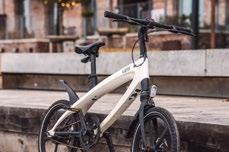
Product Brief:
KVAERN is the easiest, coolest and most sustainable way of transport which runs on solar power.
PRODUCT FEATURES:
The KVAERN bike has an impressive frame that provides exceptional control. The front suspension provides a smooth ride on every surface. Advanced, lightweight materials are used throughout, to reduce overall weight to ensure a sporty feel with comfort on any road. It can give a 0 to 25 km/h speed in just 4.5 seconds. Equipped with a powerful motor and smart torque sensor technology. Runs on an off-the-grid solar power pack, comes in a cool design.
PRODUCT APPLICATION:
KVAERN bikemakes city riding more relaxing with pedal assist. This feature provides electric power when you need it. It has a built-in removable battery, KVAERN+ power pack is a solar power pack system designed for your KVAERN bike.
PRODUCT BENEFITS:
The KVAERN bike is a new type of e-bike, designed around you. It will help you go further, faster, longer, and can help keep you fit, It can help save you money.
AVAILABILITY:
The product is available at INR 129,922 on the retail and firms website; https:// kvaern.com/
ABFOCE: Ultra Foldable Solar Panel & Wireless Charger Kit
PRODUCT BRIEF:
4-Fold solar panel packable in a box with a 10000mAh removable wireless USB charger supports QC3.0, PD3.0 & faster charging protocols having LED display.
PRODUCT FEATURES:
The ABFOCE solar recharging kit compacts to an extremely portable size while ensuring wherever you are your gadgets are juiced up, prepped and on. The magnetic USB charger attaches itself to panels and just as readily releases, allowing for inside use too. Equipped with fast charging USB-A, USB-C outlets and a Qi-compatible wireless mat, the ABFOCE gets multiple devices fully charged fast.
PRODUCT APPLICATION:
Made with the most powerful and attractive mono-crystalline panels available, the ABFOCE’s four solar panels readily absorb more solar energy. Not only that, the panels are filled with fluoropolymer, the best light transmission that can be found in the market.
PRODUCT BENEFITS:
With superb green credentials, ABFOCE delivers a natural power source to just about any and all of your compact electronics: smartphones, e-books, SLR cameras, GoPro Series, drones, in fact, just about any portable electronics you need on demand. All of this and more, as ABFOCE also effortlessly provides multiple electronics with charging power.

AVAILABILITY:
The product is available on retail
Wireless WiFi/4G Solar Powered CCTV Camera
PRODUCT BRIEF:
A solar powered security camera which run by fully wireless solar and battery power to offer you non-stop wire free security.
PRODUCT FEATURES:
Fully wireless CCTV camera with both WiFi and 4G solution available for which no electricity is needed and 100% solar powered. It has 1W/2.5/3.3W/5.5W solar panel capacity with different battery variants like; 3400mAh/ 5200mAh/5600mAh/10400mAh built-in LiFePO4 battery. The camera is IP66/ IP67 Waterproof protection and has a 2MP 1080P HD resolution with a 3.6mm/4mm auto focus lens. Equipped with Famous brand chip Hisilicon/Ingenic and TF card. Support 64GB/128GB and cloud storage. You can operate it with Mobile APP for remote monitoring.
PRODUCT APPLICATION:
It can be used at various locations like, Home/villa, Garden/orchard, Cattle farm/ poultry farm, Fisheries, and Playgrounds.
PRODUCT BENEFITS:
Product Benefits: You can use this solar powered CCTV camera without electricity and grid connection which makes it cost effective. It is Customized OEM/ ODM and comes with a 1 year warranty
AVAILABILITY:
The product is available in different variants at the firm’s website
Assistant Manager(Sales and Marketing) Senior Executive (Sales and Marketing)
Position: Assistant Manager–Sales and Marketing (Solar PV Business) Position: Senior Executive – Sales and Marketing (Solar PV Business)
Superior: Lab Manager Superior: Assistant Manager –Sales & Marketing
Location: Delhi, India Location: Mumbai & Hyderabad, India
Job Purpose • Marketing and brand promotion. • Business Development for Solar Advisory Services (testing services – BIS and others, technical due diligence services, consulting services).
Roles and Responsibilities: 1.Marketing of Lab services • Execute marketing strategy for promoting Mitsui Chemicals brand to developers, manufacturers and govt. bodies. • Participate in important conferences and seminars for brand promotion activities. • Build relationships with various stakeholders. 2.Business development and Sales • Execution of sales strategy and sales promotion. • Track of tenders for bidding. • Periodically reporting of the development activities. 3.Sales & Marketing Strategy • Gather market information and marketing insights. • To create marketing strategy based on customer profile and industry. • To design pricing strategy after analysing all factors. 4.Leadership • To co-ordinate with team members and align sales process. • To contribute towards development of skills of fellow employees.
Job Requirement: • Post-graduate/ Graduate engineering degree in a relevant technical area (B.E / B.Tech or M.Tech) • Business Management graduateswillbepreferred. • Professional experience of 2-4 years of sales, marketing & business development in solar testing, advisory and consulting industry. • Excellent presentation skills and understanding of the business. • Knowledge in the certification, production and testing of PV modules • Computer skills in MS Office and general documentation tools. • Excellent team player. • Must be proficient in English. • Ability to work according to industry norms and standards to ensure high level of quality.
How to Apply : Interested Candidates can directly share their resume on Email:Jayeshwari.bamezai@mitsuichemicals.com , shortlisted candidates will get a call or email from HR Team for further interview process. Job Purpose • To assist the ‘sales and marketing’ function for successful execution of the strategies. • To assist in business development process, marketing process & other lab related activities.
Roles and Responsibilities: 1. Sales &Business Development • Meeting customers for execution of sales strategy and sales promotion. • Manage key accounts of the territory. • Develop relationships with influencers and decision makers. • Periodically reporting of the development activities. 2. Marketing strategy • Gather key market information of customers, competitors and govt. bodies (BIS, MNRE etc.) • Participate in branding activities at conferences and seminars. • Support in creating marketing tools such as brochures, presentations which aligns marketing strategy. 3. Other Responsibilities • To assist and learn from customer meetings, interactions, visits etc. • To get involved in all the processes followed in the lab (technical & commercials)
Job Requirement: • Post-graduate/ Graduate engineering degree in a relevant technical area (B.E / B.Tech or M.Tech) • Business Management graduateswillbepreferred. • Professional experience of 1-2 years of sales, marketing & business development in solar testing, advisory and consulting industry. • Excellent presentation skills and understanding of the business. • Must have good technical knowledge, should be an initiator. • Self-motivated and must have willingness to learn. • Computer skills in MS Office and general documentation tools. • Must be proficient in English. • Ability to work according to industry norms and standards to ensure high level of quality.
How to Apply : Interested Candidates can directly share their resume on Email: Jayeshwari.bamezai@mitsuichemicals.com , shortlisted candidates will get a call or email from HR Team for further interview process.
Cybersecurity Engineer - ABB
This is a Cybersecurity Engineer role, reporting to the Technical Manager in business area Industrial Automation (IA) located in Bangalore. You will be working at Ability Innovation Center (AIC), home to the largest technology and engineering pool in ABB globally and is a part of ABB Global Industries and Services Private Limited, a subsidiary of ABB. It is based in Bangalore, the silicon-valley of India. Its unique infrastructure places research, development, engineering, and service teams under one roof, increasing collaboration and reducing time to market, with no compromise on quality. Qualifications: ME/M.Tech/B.E/ B.Tech form reputed institution with Information Technology or Computer Science stream. Experience: Required 5+ years of experience in product development, engineering or similar. Location: Bangalore, Karnataka (India) Responsibilities: • Architecting and designing of the collaborative operations center (COC) solutions, such as developing use cases for cyber security. • Delivering analytics dashboards, reports, alerts, site audit/assessment, creating reference architecture from data sourced. • Creating Architecture from Manufacturing site like PLC, DCS, HMI, SCADA, engineering tool and infrastructure based on SIEM software such as
IBM Qradar, Splunk, Forescout, etc. Your Background: • Should have sound Experience in cyber security threats and defense options (technology, procedures). • Should have knowledge of ABB/Non-ABB manufacturing offering (products, systems and services). How to Apply : https://global.abb/group/en/ careers











